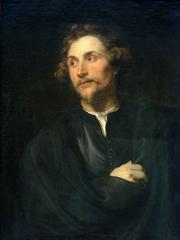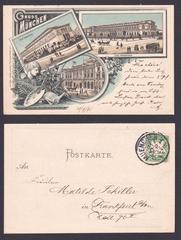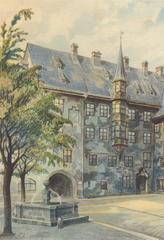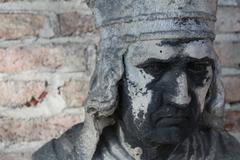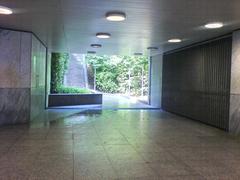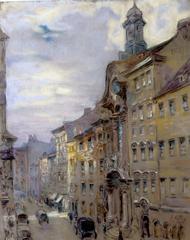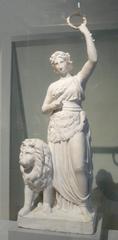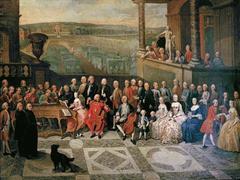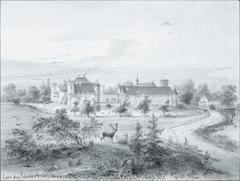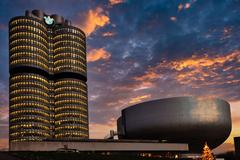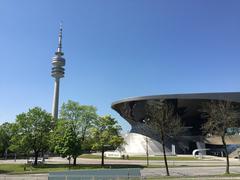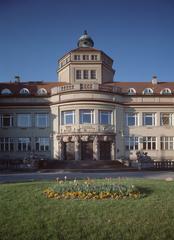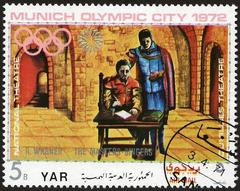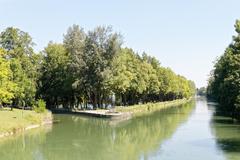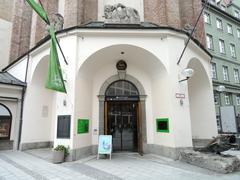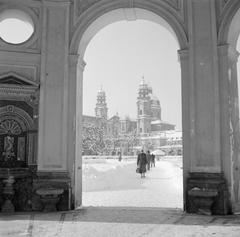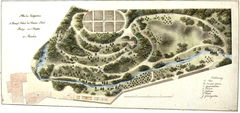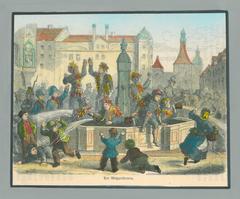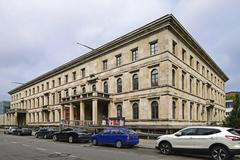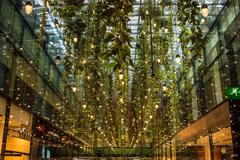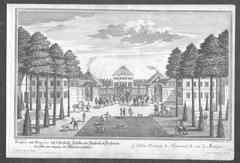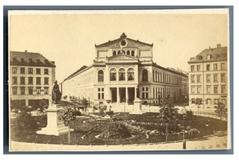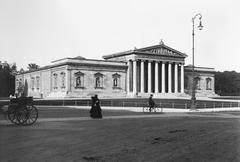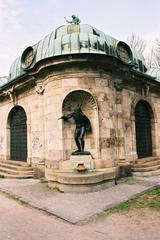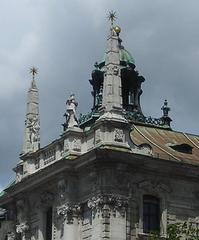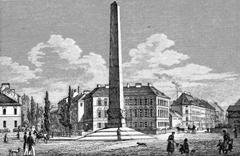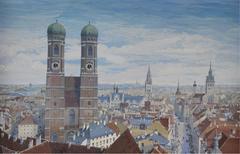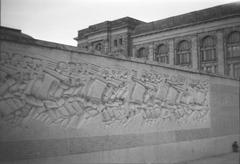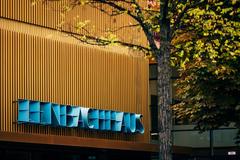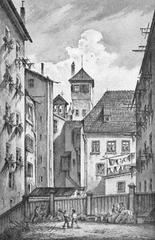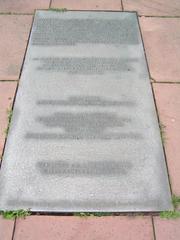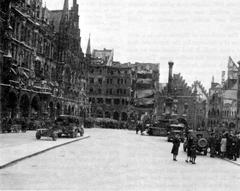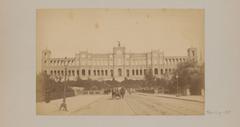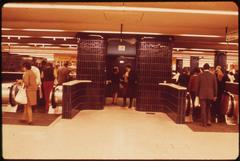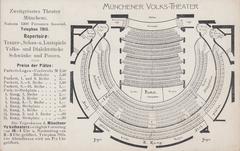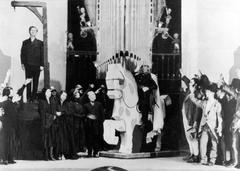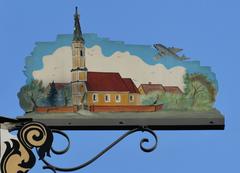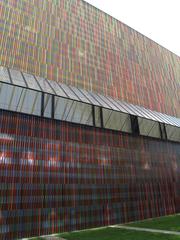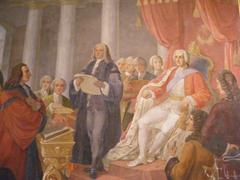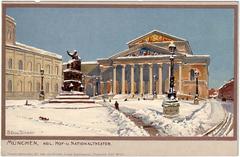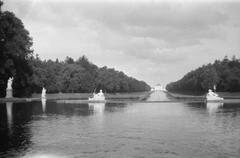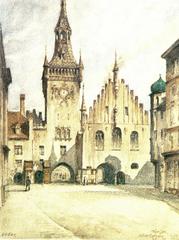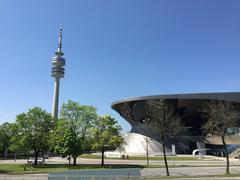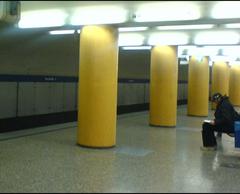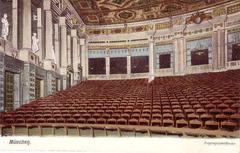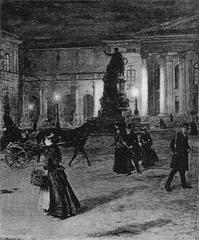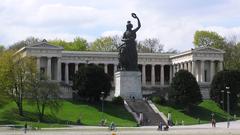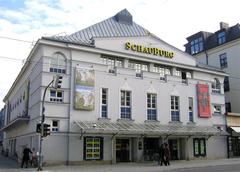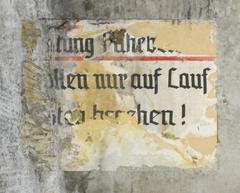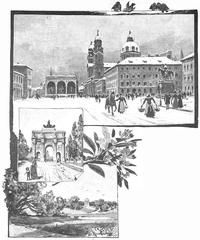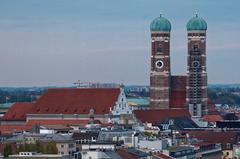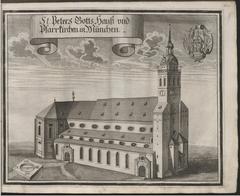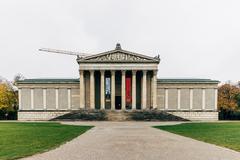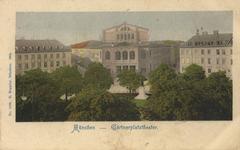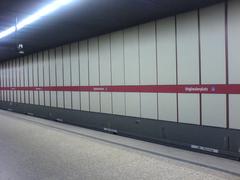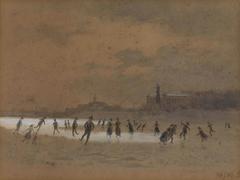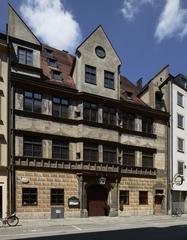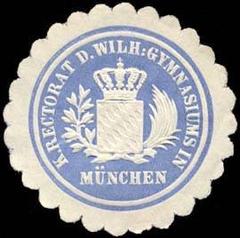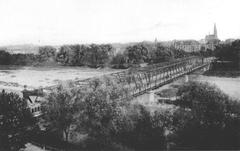
Alte Pinakothek Visiting Hours, Tickets, and Historical Significance
Date: 18/07/2024
Introduction
The Alte Pinakothek in Munich, Germany, stands as one of the world’s oldest and most prestigious art museums, offering a treasure trove of masterpieces spanning from the 14th to the 18th centuries. Commissioned by King Ludwig I of Bavaria and designed by the renowned architect Leo von Klenze, the gallery opened its doors in 1836 to house the extensive art collection of the Wittelsbach family. This neoclassical edifice not only showcases an impressive collection of European art but also represents a significant milestone in the architectural and cultural history of the region (Munich Tourist Information) (Alte Pinakothek Collection).
The gallery’s architectural design, characterized by large windows and skylights, was revolutionary for its time, allowing natural light to illuminate the artworks. Despite suffering extensive damage during World War II, the museum was meticulously reconstructed in the 1950s, blending historical preservation with modern elements. Today, the Alte Pinakothek continues to be a beacon of art, culture, and education, attracting scholars and enthusiasts from around the globe (Bavarian State Painting Collections).
Visitors can explore an array of masterpieces by iconic artists such as Leonardo da Vinci, Albrecht Dürer, and Peter Paul Rubens, making it an essential destination for anyone interested in the evolution of Western art. This comprehensive guide aims to provide you with all the necessary information for planning your visit, including historical insights, visiting hours, ticket prices, and practical tips to enhance your experience (Germany Travel).
Table of Contents
- Introduction
- Origins and Early Development
- Architectural Significance
- World War II and Reconstruction
- Expansion and Modernization
- The Collection
- Cultural Impact
- Notable Exhibitions and Events
- Preservation and Conservation Efforts
- Visitor Information
- Nearby Attractions
- FAQ
- Conclusion
Exploring the Alte Pinakothek - History, Tickets, and Visitor Tips
Origins and Early Development
The Alte Pinakothek, one of the oldest galleries in the world, was commissioned by King Ludwig I of Bavaria. The construction began in 1826 and was completed in 1836. The building was designed by the architect Leo von Klenze, who was inspired by the Italian Renaissance style. The gallery was intended to house the extensive art collection of the Wittelsbach family, which had been amassed over centuries. The name “Pinakothek” is derived from the Greek word “pinakotheke,” meaning a picture gallery.
Architectural Significance
The Alte Pinakothek’s architecture is notable for its innovative design. Leo von Klenze’s use of large windows and skylights was revolutionary at the time, allowing natural light to illuminate the artworks. The building’s façade is characterized by its long, horizontal lines and the use of red brick, which was unusual for the period. The gallery’s layout, with its series of interconnected rooms, was designed to provide a seamless viewing experience for visitors. The building itself has been recognized as a masterpiece of 19th-century architecture (Munich Tourist Information).
World War II and Reconstruction
The Alte Pinakothek suffered significant damage during World War II. In 1944, the building was hit by bombs, which destroyed large parts of the structure and many of the artworks. The reconstruction of the gallery began in the 1950s under the direction of architect Hans Döllgast. Döllgast’s approach to the restoration was to preserve the war-damaged sections of the building as a historical reminder, while also incorporating modern elements. The gallery reopened to the public in 1957, and the restoration work continued into the 1960s (Bavarian State Painting Collections).
Expansion and Modernization
In the late 20th and early 21st centuries, the Alte Pinakothek underwent further expansions and modernizations. In 1998, a new wing was added to the building to accommodate the growing collection. This expansion was designed by architect Alexander von Branca and was intended to blend seamlessly with the original structure. The gallery also implemented modern climate control and security systems to protect the artworks. These updates have ensured that the Alte Pinakothek remains a state-of-the-art facility for the display and preservation of art (Munich.de).
The Collection
The Alte Pinakothek’s collection spans the 14th to the 18th centuries and includes masterpieces by some of the most renowned artists in history. The gallery is particularly known for its collection of Old Masters, including works by Albrecht Dürer, Peter Paul Rubens, and Leonardo da Vinci. One of the highlights of the collection is Dürer’s “Self-Portrait at the Age of 28,” which is considered one of the most iconic self-portraits in art history. The gallery also houses an extensive collection of Italian Renaissance paintings, including works by Raphael and Titian (Alte Pinakothek Collection).
Cultural Impact
The Alte Pinakothek has had a significant impact on the cultural landscape of Munich and beyond. The gallery has been a major center for art education and research, attracting scholars and art enthusiasts from around the world. It has also played a key role in the development of Munich as a cultural capital. The gallery’s exhibitions and educational programs have made art accessible to a wide audience, fostering a greater appreciation for the visual arts. The Alte Pinakothek continues to be a vital institution in the cultural life of Munich (Germany Travel).
Notable Exhibitions and Events
Over the years, the Alte Pinakothek has hosted numerous notable exhibitions and events. These have included retrospectives of major artists, thematic exhibitions, and collaborations with other leading museums. One of the most significant exhibitions in recent years was the 2018 exhibition “Florence and its Painters - From Giotto to Leonardo da Vinci,” which showcased the development of Florentine art from the 14th to the 16th centuries. The gallery also regularly hosts lectures, workshops, and educational programs, making it a dynamic and engaging institution (Pinakothek Museums).
Preservation and Conservation Efforts
The preservation and conservation of the artworks in the Alte Pinakothek are of paramount importance. The gallery employs a team of conservators who are responsible for the care and maintenance of the collection. This includes regular inspections, cleaning, and restoration work. The gallery also collaborates with international conservation experts and institutions to ensure that the latest techniques and technologies are used in the preservation of the artworks. These efforts are essential in ensuring that the collection can be enjoyed by future generations (Conservation at Alte Pinakothek).
Visitor Information
Visiting Hours
- Monday: Closed
- Tuesday to Sunday: 10:00 AM - 6:00 PM
- Thursday: 10:00 AM - 8:00 PM
Tickets
- Adults: €7
- Reduced: €5
- Sundays: €1 for all visitors
- Free admission for children and young people under 18 years
Travel Tips and Accessibility
- The Alte Pinakothek is centrally located and easily accessible by public transport. The nearest U-Bahn station is Odeonsplatz.
- The gallery is wheelchair accessible and offers free wheelchairs for use during your visit.
- Audio guides and guided tours are available in multiple languages.
Nearby Attractions
- Neue Pinakothek: Just a short walk away, this gallery focuses on 19th and early 20th-century art.
- Pinakothek der Moderne: Another nearby attraction, showcasing modern and contemporary art.
- English Garden: A beautiful park perfect for a leisurely stroll after your museum visit.
FAQ
What are the Alte Pinakothek visiting hours?
The gallery is open Tuesday to Sunday from 10:00 AM to 6:00 PM, and on Thursdays until 8:00 PM. It is closed on Mondays.
How much are Alte Pinakothek tickets?
Tickets are €7 for adults, €5 for reduced admission, and €1 for all visitors on Sundays. Admission is free for children and young people under 18.
Is the Alte Pinakothek accessible?
Yes, the gallery is wheelchair accessible and offers free wheelchairs for use during visits.
Conclusion
The Alte Pinakothek is more than just a gallery; it is a beacon of art, culture, and history. From its architectural marvels to its invaluable collection, a visit here is a journey through time and creativity. Whether you’re exploring Munich historical sites or delving into the world of Old Masters, the Alte Pinakothek offers an experience like no other. Plan your visit today and immerse yourself in the rich tapestry of art and history that this iconic institution has to offer.
References
- Munich Tourist Information, 2023, Munich Tourist Information https://www.munich-touristinfo.de/Alte-Pinakothek.htm
- Bavarian State Painting Collections, 2023, Bavarian State Painting Collections https://www.pinakothek.de/en/alte-pinakothek
- Alte Pinakothek Collection, 2023, Pinakothek https://www.pinakothek.de/en/collection/alte-pinakothek
- Germany Travel, 2023, Germany Travel https://www.germany.travel/en/cities-culture/museums/alte-pinakothek.html
- Pinakothek Museums, 2023, Pinakothek https://www.pinakothek.de/en/exhibitions
